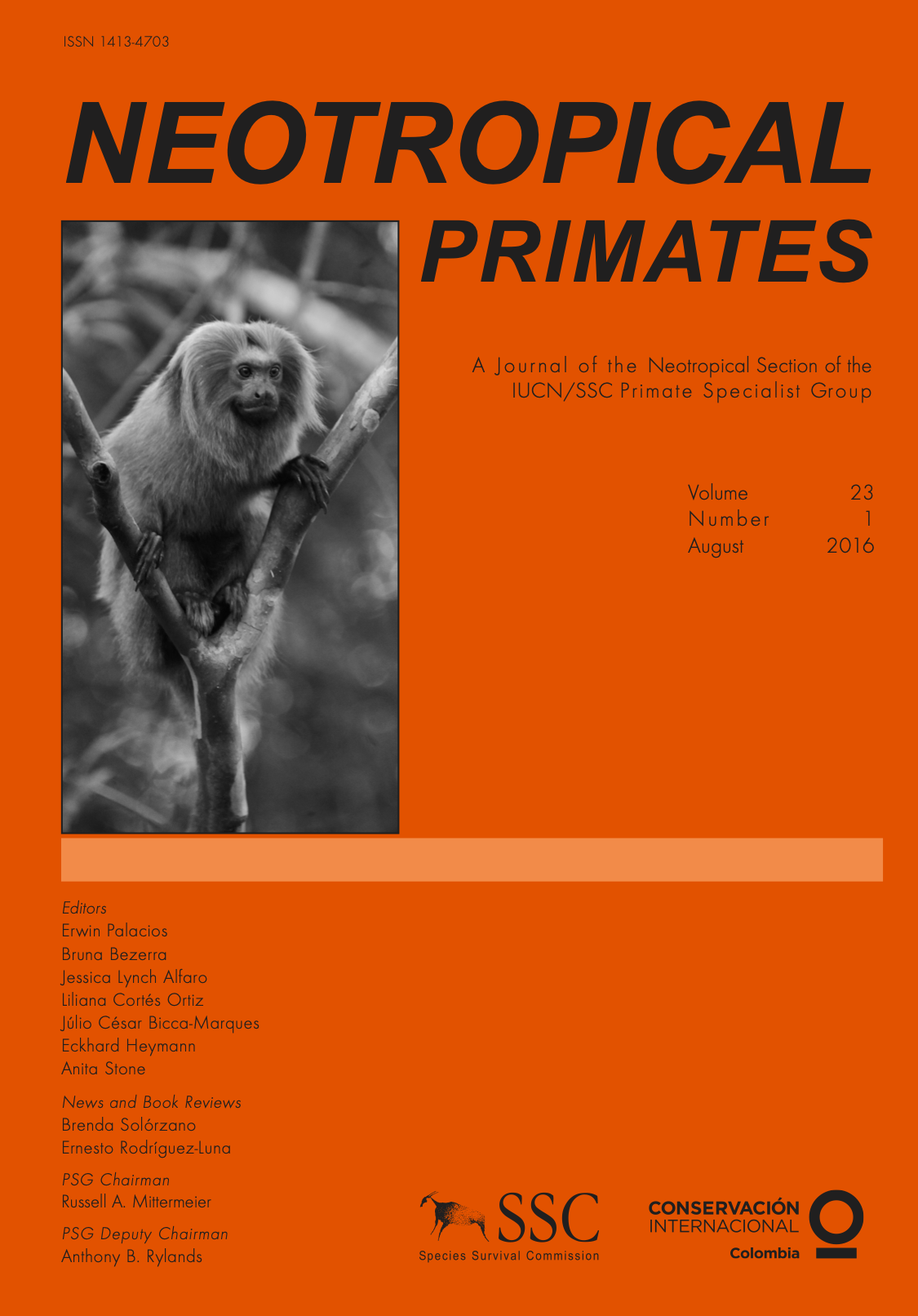Unusual intergroup movement of young males in a male philopatric society
DOI:
https://doi.org/10.62015/np.2016.v23.126Keywords:
Brachyteles hypoxanthus, male dispersal, male philopatry, demography, operational sex ratio, association indexAbstract
Deviations from sex-biased dispersal patterns of primate species have often been attributed to local demography, particularly in cases of dispersal by males in what are typically male philopatric societies. Here, we evaluate the demographic conditions associated with novel observations of intergroup movements by two male northern muriquis, Brachyteles hypoxanthus, monitored since their births at the Reserva Particular do Patrimônio Natural - Feliciano Miguel Abdala, in Caratinga, Minas Gerais, Brazil. Specifically, we compare the size and operational sex ratios (OSR) of all four muriqui groups in the study population at the time the two males, aged 5.4 and 7.9 years, left their natal group to associate with members of a non-natal group, and again 3 months later, when the older male, ZS-J, returned to his natal group. We also use Association Indices to evaluate the males’ spatial relationships in their natal and non-natal groups to better understand the social conditions that may have also affected their unusual movements. The two males initially moved from their natal group (Jaó), which had the highest OSR in the population, into the smallest group with the most favorable OSR (M2). However, ZS-J subsequently returned to his natal group despite its much higher OSR. Both males had strong spatial associations in their natal group prior to their departures, but only the younger male achieved similar spatial associations in M2 group, where he remained. ZS-J’s extreme spatial peripheralization in M2 group may have contributed, at least in part, to his return to Jaó group, where his earlier strong spatial associations were restored. These findings suggest that social and demographic factors may be involved in individual deviations from a species or population’s normative dispersal patterns. They also demonstrate the value of long-term field studies of recognized individuals over the duration of their lives for documenting behavioral flexibility.

Downloads
Published
Issue
Section
License

This work is licensed under a Creative Commons Attribution-NonCommercial-ShareAlike 4.0 International License.


